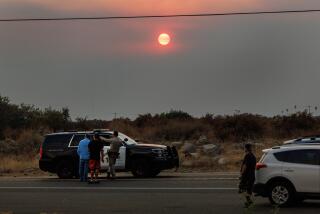Pollution Graphs
We want to thank you on behalf of our members for providing the additional information about carbon monoxide (CO) and nitrogen dioxide (NO2) in your new daily air pollution graphs. We recognize this new format is the result of a commitment by The Times’ staff to devise the best means to convey this complex information and we extend our congratulations for this substantial accomplishment.
To the uninitiated, it may appear that the new information is less than useful, since CO and NO2 levels at this point are generally below those of ozone (O3). With the onset of warm sunny days, our winter problems with CO and NO2 are now receding, and are being replaced by the warm-weather pollutant, ozone. But there is no question that, as the year ends and cold weather returns, the graphs will provide a valuable service by showing Angelenos that ozone is not the only pollutant that threatens local health. The graphs will clearly depict the fact that air pollution varies here by time of year and location.
The South Coast Air Quality Management District estimates that in 1983 more than 70% of our population was potentially exposed to CO health standard violations, while 60% was exposed to 1 to 3 days of first-stage alerts for NO2. Since we experienced more NO2 exceedances in 1984, an even higher percentage was exposed last year. Since we don’t project attainment of the CO health standard by 1987, and there is disagreement about NO2 attainment by that deadline, clearly you are providing information that will be useful to your readers.
BARBARA SULLIVAN
Executive Director
Coalition for Clean Air
Santa Monica
More to Read
Sign up for Essential California
The most important California stories and recommendations in your inbox every morning.
You may occasionally receive promotional content from the Los Angeles Times.









